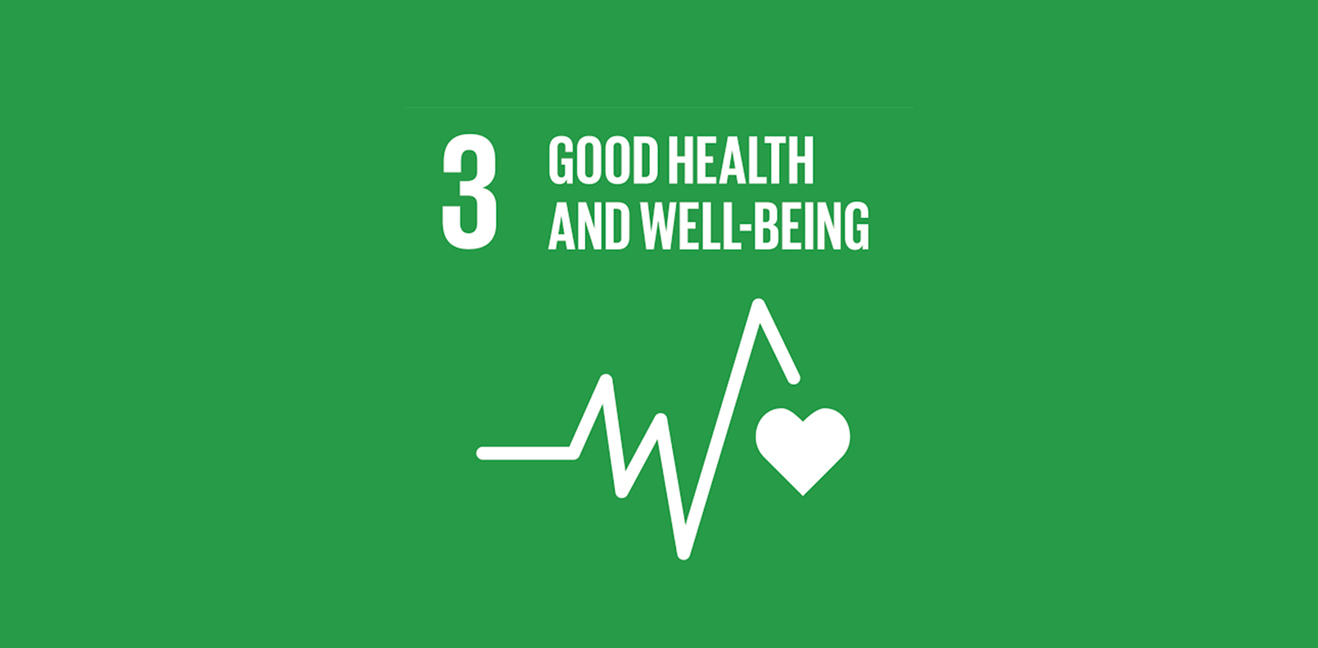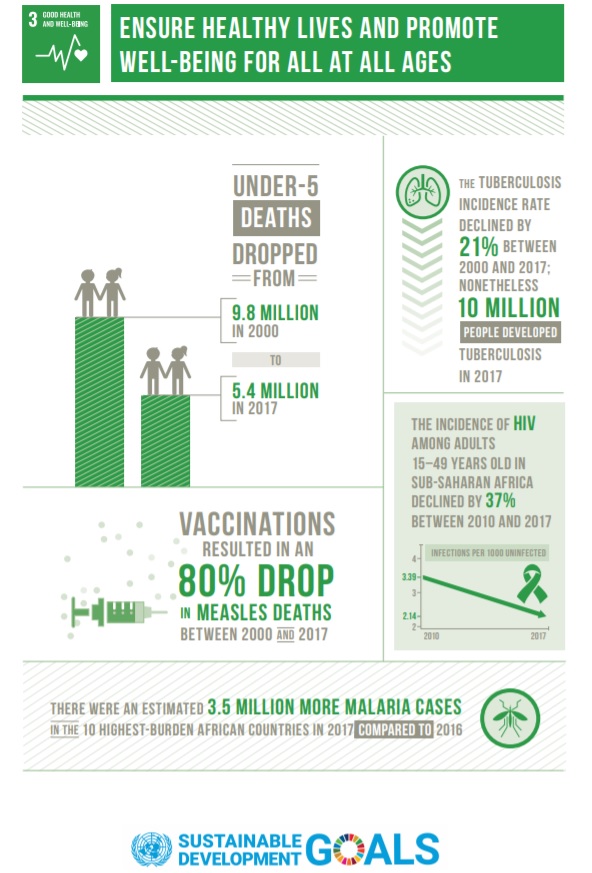Ensuring healthy lives and promoting the well-being at all ages is the third SDG included in the 2030 Agenda for Sustainable Development

The development of cities and nations is not possible without the guarantee of a good quality of life for its citizens. After all, as the 2030 Agenda by UN reinforces, the planet’s prosperity will only be achieved when basic rights are guaranteed for everyone. But after all, what would those rights be? From universal education to the eradication of poverty, the 17 Sustainable Development Goals indicate what social, financial and environmental policies must be accomplished with by all countries by 2030. And health is, undoubtedly, one of them.
With the purpose of “ensuring a healthy life and promoting the well-being for all, at all ages”, ODS 3 – Good Health and Well-Being wants to help people live longer and in better conditions. For this reason, the Bright Cities platform has as one of its indicators the evaluation of life expectancy in cities.
The goal is as challenging as it is complex, since it addresses broad and cross-cutting issues: more than avoiding diseases, health implies providing a balanced diet and adequate medical care, eradicating poverty, encouraging physical exercise and ensuring pollution-free environments. Directly related to the other 2030 Agenda Objectives, such as the end of poverty and the eradication of hunger, SDG 3 is proof that urban changes will only be truly transformative when used in an integrated and common way.
There is, for example, the issue of hunger. SDG 2 – Zero Hunger and Sustainable Agriculture establishes a series of goals for municipalities and nations to strengthen the sustainable production of their food, respect the planet’s resources and promote balanced nutrition programs. Thus, when addressing diseases such as malnutrition and obesity – both of them being the result of inadequate diets – SDG 2 is linked to health. According to data collected by the UN, in regions such as East Asia and Sub-Saharan Africa, where is the highest prevalence of malnutrition (over 256 million people), maternal mortality is 14 times higher than in the rest of the world and occurs in four out of five deaths of children under five.
Poverty is also a determinant for mortality rates, as mentioned by SDG 1 – Eradication of Poverty. According to UN data, children born in poverty are almost twice as likely to die before the age of five as those from wealthier families. Another factor that influences health is the supply of potable water and sewage services, since both of them have a proven impact on infant mortality rates and on the proliferation of zoonoses. Even traffic safety, which influences mortality rates and hospital calls, must be considered by public policies to ensure the population’s well-being.
Of course we must mention disease’s risks when talking about health. According to data released by the UN, chronic diseases are today those that most affect the world population: 63% of all deaths in the world come cases such as cardiovascular, cancer and diabetes. Estimated costs for low and middle income countries are up to US $ 7 trillion by 2025. According to the World Health Organization – WHO, cardiovascular diseases are today the number one cause of death worldwide, with three quarters of incidents occuring in countries with fewer resources.
Sexually transmitted diseases are another important target for SDG 3, like HIV / AIDS. According to the UN, more than 36 million people in the world lived with the virus in 2017 and 940 thousand deaths were caused as a result of it. The number of patients continues to grow despite the increase of undergoing treatments – in 2013, the number of patients affected was 35 million. In the Brazilian context, the situation is worrying: according to studies by the Joint United Nations Program on HIV / AIDS – Unaids, the country registered a 21% increase in HIV cases between 2010 and 2018.
Diseases transmitted by mosquitoes, such as dengue, chikungunya, zika virus and malaria also deserve the governments’ attention, especially in tropical countries like Brazil. From awareness campaigns to appropriate treatment, public policies aimed at eradicating cases are essential to prevent outbreaks and deaths. It is also worth mentioning the importance of vaccines, especially for crises such as measles: since 2000, vaccination against the disease has prevented almost 15.6 million deaths.
According to the latest study released by the UN, health in the world is more precarious among children and low-income countries:
- Only half of women in developing regions receive the recommended amount of health care they need;
- More than five million children still die before their fifth birthday each year;
- In 2013, 240 thousand new children were infected with HIV;
- Globally, adolescent girls and young women face gender-based inequalities, exclusion, discrimination and violence, which put them at increased risk of acquiring HIV;
- AIDS is now the leading cause of death among adolescents (aged 10–19) in Africa and the second most common cause of death among adolescents globally;
- Tuberculosis remains the leading cause of death among people living with HIV, accounting for around one in three AIDS-related deaths.

In Brazil, despite the right to medical and hospital assistance being guaranteed by the Unified Health System – SUS, there is still a lot of work to be done. According to the Secretaria de Atenção Primária à Saúde – SAPS, 25.47% of the country’s population – more than a quarter – does not receive basic health care.
To find out how cities are improving, Bright Cities Platform makes available online a list of the most advanced global municipalities in areas such as health, environment, economy and education. In addition, you can consult the 160 Smart Cities Indicators used in our cities diagnosis. Essential to collect data on a given urban context, the indicators are aligned with all 17 Sustainable Development Goals and are important tools for the analysis, evaluation and monitoring of a city.
We listed below some of the indicators used by Bright Cities that are related to the goals established by SDG 3 – Good Health and Well-Being:
- Indicator “Number of physicians”: pointing out the available number of health agents, the indicator helps to evaluate whether a given municipality is able to properly serve its entire population. Therefore, it relates to SDG 3 target 3.8: “Achieve universal health coverage, including financial risk protection, access to quality essential health-care services and access to safe, effective, quality and affordable essential medicines and vaccines for all“;
- Indicator “Life expectancy in cities”: health is one of the greatest influences for the longevity in a city, as it is directly associated with its quality of life. Thus, the indicator is related to the goal 3.4 of SDG 3: “By 2030, reduce by one third premature mortality from non-communicable diseases through prevention and treatment and promote mental health and well-being”;
- Indicator “Number of in-patient hospital beds”: by quantifying the capacity of a given municipality to receive hospitalized patients, the indicator relates to SDG 3 target 3.d: “Strengthen the capacity of all countries, in particular developing countries, for early warning, risk reduction and management of national and global health risks“;
- Indicator “Suicide rate”: health must always include the physical and mental well-being of citizens. When indicating how many chose to take their own life, the indicator is an important reference to assess the mental health of the population, according to SDG 3 target 3.4: “By 2030, reduce by one third premature mortality from non-communicable diseases through prevention and treatment and promote mental health and well-being”;
- Indicator “Index of coverage of mandatory vaccinations”: vaccines for tuberculosis, yellow fever, tetanus and measles are some of those available for free at Brazilian health centers. The indicator shows the percentage of a specific city that had access to these services, according to SDG 3 target 3.3: “By 2030, end the epidemics of AIDS, tuberculosis, malaria and neglected tropical diseases and combat hepatitis, water-borne diseases and other communicable diseases“;
- Indicator “Under age five mortality”: the most vulnerable, children under five years old are the main victims of diseases. The mortality rate is directly related to health indexes and is in accordance with SDG 3 target 3.2: ” By 2030, end preventable deaths of newborns and children under 5 years of age, with all countries aiming to reduce neonatal mortality to at least as low as 12 per 1,000 live births and under-5 mortality to at least as low as 25 per 1,000 live births“.
Many other indicators also contribute to evaluate public health agendas, such as “Number of nursing and midwifery personnel”, “Transportation fatalities” and “Fine Particulate Matter (PM2.5) concentration” in the air. From these results, Bright Cities Platform manages to develop complete diagnostics, understanding which smart solutions can be used according to the scale, urgency and budget of each municipality.
Our Database of Intelligent Solutions is always growing and proving that many technologies are capable of generating concrete actions to improve people’s lives. This is the case of the Pulse Point app, which already works in three thousand cities in the United States. Through a geolocation system, people with adequate first aid training can register in its system and are called in cases of emergencies near the neighborhood, providing first aids until the ambulance’s arrival.
Do you want to know more about intelligent solutions? Our News Platform is making a special content about the SDGs, where each week we address one of the 17 Goals and tell you what smart solutions suit each one of them. Follow our Instagram and Twitter to learn more about how the 2030 Agenda wants to change the world in the next ten years!





